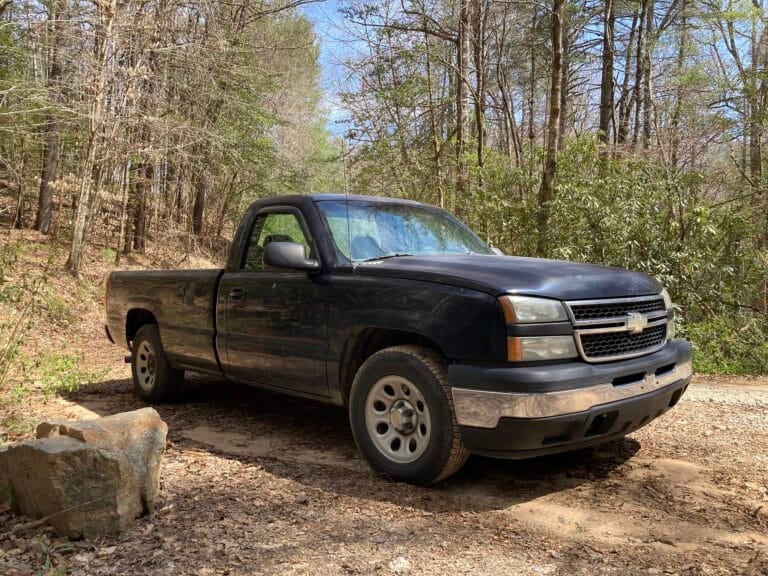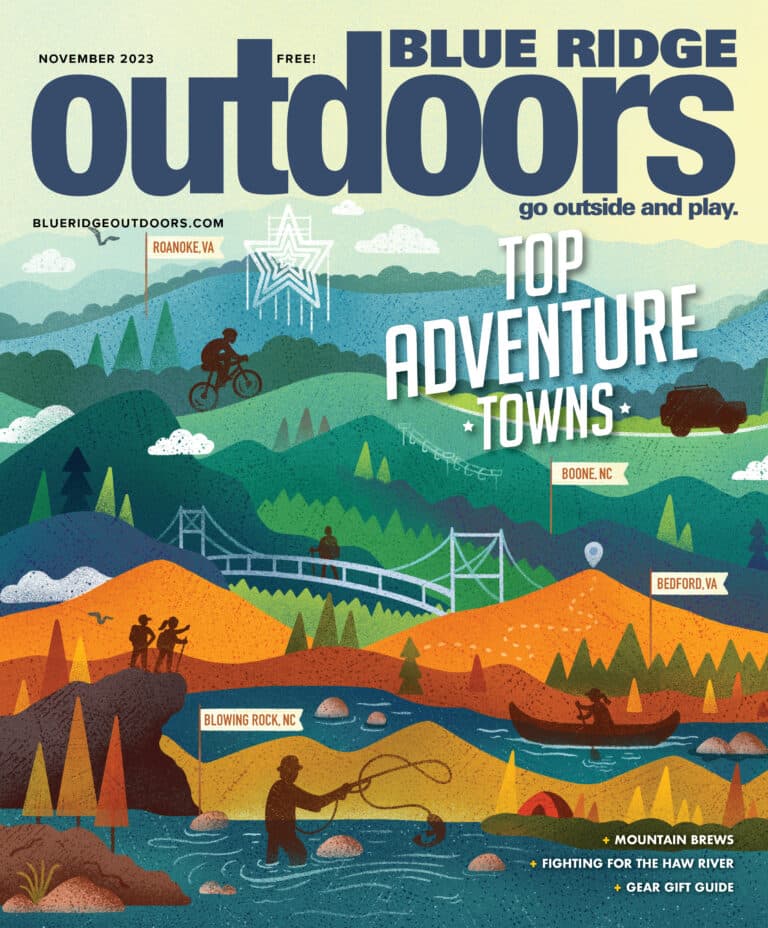 Two months ago, Congress bestowed Wild and Scenic River designation on over 1,100 miles of rivers — the second largest addition to the Wild and Scenic inventory since its inception in 1968.
Two months ago, Congress bestowed Wild and Scenic River designation on over 1,100 miles of rivers — the second largest addition to the Wild and Scenic inventory since its inception in 1968.
Of the 86 rivers that received the designation, all but three were located in the West, and the remaining three were located in Massachusetts and Vermont. The Southeast was shut out, largely because it has lacked the grassroots support found elsewhere for Wild and Scenic Rivers. Only seven rivers in the Southeast are protected as Wild and Scenic Rivers. With 252 rivers nationwide now on the list, that leaves the region vastly underrepresented.
But this does not mean that no Wild and Scenic Rivers exist here. It is hard to deny the beauty of an untamed Appalachian river, and many of those rivers could be considered Wild and Scenic if the support were there.
The Wild and Scenic Rivers Act of 1968 was enacted to protect rivers from being dammed, diverted and degraded. It states that “certain selected rivers [that] possess outstandingly remarkable scenic, recreational, geologic, fish and wildlife, historic, cultural or other similar values, shall be preserved in free-flowing condition…for the benefit and enjoyment of present and future generations.”
Rivers on the list are divided into one of three categories. Wild rivers are largely inaccessible except by trail and are largely unpolluted. Scenic rivers are still largely undeveloped but they may contain road access in some places. The final category, Recreational rivers, is for rivers that contain easy access or have some development along their shorelines.
Many rivers that meet these two main criteria— free-flowing and containing one or more of these outstandingly remarkable values—can be found on the Nationwide Rivers Inventory (NRI), a list maintained by the National Park Service of rivers that are potentially eligible for Wild and Scenic designation. The NRI currently contains more than 3,400 river segments (the entire river does not have to meet Wild and Scenic criteria for a portion to be declared eligible). Dozens of Southeastern Rivers are listed in the NRI and meet the criteria for Wild and Scenic designation.
“If [a river] has already been deemed eligible, it just takes an act of Congress. Local folks who are looking to keep the river as they love it will ask their people in Congress to sponsor a bill to have it designated,” says David Moryc, senior director for American Rivers, a national river conservation organization.
One obvious choice for Wild and Scenic designation is the Youghiogheny River (or simply the Yough), which begins deep in the mountains of West Virginia at its border with Maryland. The river flows north into the panhandle of Maryland and into southwestern Pennsylvania, finally joining up with the Monongahela River 122 miles from its Appalachian headwaters.
“Probably one of the best stretches of whitewater in the Eastern U.S. is on the Upper Youghiogheny,” says Krissy Kasserman, the Youghiogheny Riverkeeper and a member of the Mountain Watershed Association.
The Yough already receives some protection. Under Maryland’s Scenic and Wild Rivers program, which was enacted in 1976, the entire Maryland portion of the river has been declared Scenic and a 21-mile segment of the river is the state’s only Wild river. This portion of the Yough is one of its most rugged and a place where class V rapids can be found almost year-round. Along its Wild segment, the river drops 280 feet in four miles.
In the past, most of the opposition to a federally protected Wild and Scenic Yough has come from private landowners, who feared the designation would infringe on their property rights along the river — a position some hold to this day.
The Mountain Watershed Association has not given up on federal designation for the Yough. Kasserman said that the organization is in the very beginning stages of looking at a portion of the river in Pennsylvania downstream from Ohiopyle State Park for Wild & Scenic eligibility.
“I think that people would be more receptive to it now than they were several decades ago when this was initially discussed,” Kasserman says.
With an undercurrent of mistrust toward the federal government that has historically run deep through the Appalachians, it is not surprising that some landowners would not want a federal label put on a river running through their property. This makes education about the Wild & Scenic program key when groups try to recruit support for a river to be designated.
 “I think when federal regulations get involved, there’s a lot of misconceptions on how much control the federal government would have over [the river],” says Palmyra Romeo, who works as the assistant French Broad Riverkeeper with RiverLink, an Asheville, North Carolina-based group that oversees the economic and environmental development of the French Broad River watershed.
“I think when federal regulations get involved, there’s a lot of misconceptions on how much control the federal government would have over [the river],” says Palmyra Romeo, who works as the assistant French Broad Riverkeeper with RiverLink, an Asheville, North Carolina-based group that oversees the economic and environmental development of the French Broad River watershed.
The first step in education is convincing people that the Wild and Scenic system is not a thinly veiled land grab by the federal government. It merely promises that what made the river special in the first place will not be threatened by things such as dams and overdevelopment. It also establishes a process for a water management plan in which federal and local governments, conservation groups, and landowners all have input on how best to protect the river.
“Once people are educated and get more comfortable with the Wild and Scenic designation, then it’s easier for the process to move forward,” Moryc says.
For Romeo, part of the work has already been completed when it comes to the Nolichucky River, a tributary of the French Broad that runs from eastern Tennessee to western North Carolina. A study completed in 1994 recommended Wild and Scenic status for an eight-mile segment that runs through the Nolichucky Gorge, located on the Tennessee-North Carolina border. The river study cited the “steep, spectacular scenic gorge where forest-covered slopes rise more than 2,000 feet adjacent to the river” as a primary reason to recommend this segment for designation. RiverLink is deciding how best to pursue Wild and Scenic designation for the Nolichucky.
“It’s a very political process. We need the support of all of the representatives of the districts containing the river,” Romeo says, adding that the river crosses through four congressional districts and two states, which means a lot of lobbying.
For her, the payoff is worth it. Wild and Scenic designation means that the river will be protected in perpetuity. It also has a big impact on the river’s public image, which brings benefits to the local economy.
“We’ve seen a real uptick in people embracing these designations as a way to help the local economy,” Moryc said.
In the French Broad watershed, many rivers besides the Nolichucky, including the French Broad itself, are also in the NRI. With enough support, Western North Carolina could ultimately contain a connected system of Wild & Scenic Rivers.
“If Western North Carolina is going to continue to be a top outdoor destination, then our rivers should be a part of that,” Romeo said.
Often, it is the legislative process itself that bogs people down. The Perquimans River, a coastal waterway located in northeastern North Carolina, has the support of its local congressmen but has been struggling for years just to get a vote to study it. The bill has been proposed in the House of Representatives in the past two legislative sessions, but it died in committee each time. Last session, the bill was also proposed in the Senate, but it met a similar fate.
Another conservation group is hoping to make more progress with a group of rivers in Great Smoky Mountains National Park. The Tennessee Clean Water Network has nominated four rivers for Wild and Scenic designation: the Little River, Abrams Creek, and the West Prong and Middle prongs of Little Pigeon River. All four rivers are on the NRI and all but Abrams Creek have also been declared Exceptional Tennessee Waters as well. It is hard to argue that the rivers fail to meet federal Wild and Scenic criteria; they are, after all, located within one of the most ecologically diverse national parks in the country.
“By designating these rivers as Wild and Scenic, more people will realize the importance of protecting them,” says Dana Wright, director of policy and legislative affairs for the Tennessee Clean Water Network.
The Tennessee Clean Water Network is attempting to work with Senator Lamar Alexander on getting a bill proposed to study the rivers, but the senator has not publicly stated his position on Wild and Scenic status for the rivers.
In addition to the 3,400 river segments already on the NRI , there are thousands more yet to be studied. As the recent Wild and Scenic Rivers bill proved, the key to protecting rivers is to start at the most local level and build up support from there.
“In every single one of the 86 rivers that were designated, it started with somebody local who really cared about their backyard river, or the place they love to canoe or kayak or fish or swim,” says Moryc. •
What the Wild and Scenic Designation Means
While each river segment has its own management plan, the following guidelines provide a general overview of what is allowed on Wild and Scenic Rivers:
Dams?
No. One of the primary reasons for the Wild & Scenic Rivers Act was to slow down the amount of rivers being dammed in the 1960s. A river may be dammed above or below the Wild and Scenic segment prior to the designation, but afterward, nothing can be built that would alter the flow of the river.
Other government projects?
For Wild rivers, there is usually no development allowed. A general rule for Scenic and Recreational rivers is that if the project would alter or degrade the quality of the river, it is not allowed. Water treatment plants are not allowed, but other types of development, including campsites, boat ramps and recreational facilities, can be built if the management plan for the river deems it beneficial. Roads can be built near Recreational rivers but not Wild rivers and rarely along Scenic rivers.
Development of private land?
Private landowners are not restricted in what they can do to their own land along the river. They can build on and farm their property, but the government may choose to purchase a conservation easement along the river if its resources are threatened.
Hunting and fishing?
Allowed.
Swimming and paddling?
Allowed.
Motorboats?
Motorboats are generally allowed on navigable Wild & Scenic rivers, unless it has been decided that their use would degrade the quality of the river. If motorboats had been used on the river in the past, they are usually not restricted once the river is designated.
Logging?
Generally not allowed near Wild rivers, since there can be no new roads built and these parcels are known for their inaccessiblity. Other classifications do not limit logging near the river, unless it is proposed within protected riparian zones and wetland habitats. Maintaining the scenic beauty of a river area is always a priority.
Mining?
For all river designations, all existing mining claims and leases are recognized and their owners must be afforded reasonable access. However, existing claims and leases must minimize their impact on the river and its outstanding values. No new claims or leases will be granted near a Wild river, but they can be granted for Scenic and Recreational rivers.







